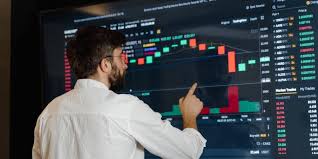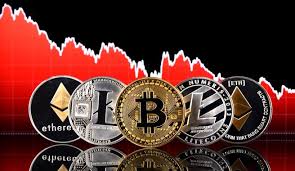
Trading Automation Crypto: The Future of Trading
In an era dominated by technology and innovation, the world of finance has witnessed a remarkable transformation, particularly in the realm of cryptocurrency. With the advent of trading automation, crypto enthusiasts and investors are now equipped with powerful tools that simplify the trading process. For those looking to gain an edge in the competitive landscape of digital assets, Trading Automation Crypto click here to discover how you can automate your trading strategy effectively.
Understanding Trading Automation
Trading automation refers to the use of software and algorithms to execute trades on behalf of investors. Instead of making trading decisions manually, traders can set predefined rules that dictate when to buy or sell digital assets. This automation ensures that trades occur promptly and efficiently, capturing optimal market conditions.
The Advantages of Trading Automation in Crypto
Implementing automation in cryptocurrency trading offers numerous advantages for both novice and experienced investors alike:
- Speed and Efficiency: Automated trading systems can analyze market data and execute trades within milliseconds, far exceeding human capabilities. This rapid execution allows traders to capitalize on fleeting opportunities in the volatile crypto market.
- Emotionless Trading: Emotions often cloud judgment and lead to rash decisions. Automated trading systems operate solely based on logical parameters, eliminating emotions from the trading equation.
- 24/7 Market Access: The cryptocurrency market operates round-the-clock, and automated trading allows investors to participate without being glued to their screens. These systems can monitor prices and execute trades at any time of day or night.
- Backtesting and Strategy Optimization: Traders can use historical data to test their strategies, allowing them to optimize their algorithms before deploying them in real-world trading scenarios.
Key Components of Trading Automation
To understand how trading automation works, it’s essential to explore its key components that empower traders to achieve their financial goals:
1. Algorithmic Trading Systems
These systems use complex mathematical models and trading strategies to execute trades based on market conditions. Algorithms can be programmed to follow a variety of trading strategies, including arbitrage, market making, and trend following.
2. Trading Bots

Trading bots are software programs designed to automatically place trades based on predefined criteria. These bots can interact with various exchanges via APIs (Application Programming Interfaces), allowing for seamless trading at a scale that would be impossible for individuals to achieve manually.
3. APIs and Integrations
To automate trading, investors need to connect their trading systems with exchanges using APIs. These integrations allow automated systems to send buying or selling orders based on the signals generated by the algorithms. Most major cryptocurrency exchanges offer API access.
4. User Interface
A user-friendly interface is crucial for managing trading automation tools. Traders need to be able to easily configure their settings, monitor performance, and make adjustments to their trading strategies without needing extensive technical knowledge.
Choosing the Right Trading Automation Tool
With numerous trading automation tools available in the market, selecting the right one can be overwhelming. Here are some factors to consider when choosing a trading automation platform:
- User Experience: A straightforward interface will enable you to quickly set up your trading strategies without a steep learning curve.
- Reliability and Security: Ensure the platform has a proven track record of reliability and utilizes robust security measures to protect your investments.
- Customizability: Look for platforms that allow you to customize trading strategies and parameters according to your specific requirements.
- Community and Support: A strong community and responsive customer support can significantly enhance your experience, providing valuable insights and assistance when you need it.
Common Strategies for Trading Automation
Several strategies have emerged as effective when implementing trading automation in the cryptocurrency market:
1. Trend Following
This strategy involves identifying the direction of the market trend and placing trades in accordance with that trend. Automated systems can analyze price movements and execute trades that align with the prevailing trend.

2. Arbitrage
Arbitrage opportunities arise when there are discrepancies in asset prices across different exchanges. Automated trading systems can quickly capitalize on these differences, buying at a lower price on one exchange and selling at a higher price on another.
3. Market Making
Market makers provide liquidity to the market by placing both buy and sell orders. Automated systems can maintain this strategy effectively, ensuring that the market remains stable and profitable for the trader.
4. Mean Reversion
This strategy is based on the idea that asset prices tend to revert to their historical average. Automated systems can help identify overbought or oversold conditions and execute trades accordingly.
Risks and Challenges of Trading Automation
While trading automation offers significant benefits, it is not without its risks and challenges. Traders should be aware of the following:
- Market Volatility: The cryptocurrency market is highly volatile, and automated systems can lead to substantial losses if not properly configured.
- System Malfunction: Technical issues or bugs in trading algorithms can result in unexpected losses. Continuous monitoring is essential to mitigate this risk.
- Over-Optimization: Over-optimizing a trading strategy based on historical data can lead to poor performance in real-time trading conditions.
- Regulatory Concerns: As the cryptocurrency market evolves, regulatory changes may affect trading automation practices. Traders should remain informed about the regulatory landscape.
The Future of Trading Automation in Crypto
As technology advances, trading automation in the cryptocurrency world is poised to evolve even further. Artificial Intelligence (AI) and Machine Learning (ML) are expected to take center stage, enabling traders to analyze vast amounts of data and make more informed decisions. Additionally, decentralized finance (DeFi) platforms are likely to incorporate automated trading solutions, democratizing access to advanced trading strategies.
Conclusion
Trading automation is transforming the way investors engage with the cryptocurrency market. By leveraging automated systems, traders can improve their efficiency, eliminate emotional biases, and potentially enhance their profits. However, understanding the mechanics behind trading automation and exercising caution is paramount. As the crypto landscape continues to evolve, staying informed and adapting to new technologies will be key to achieving long-term success in this dynamic market.
Schreibe einen Kommentar